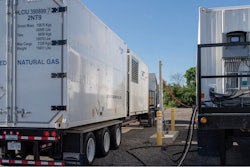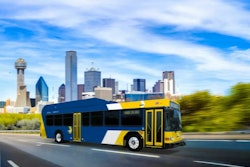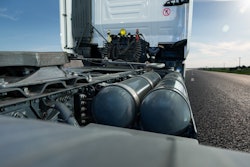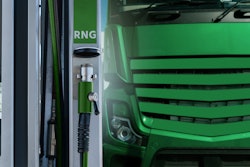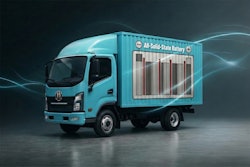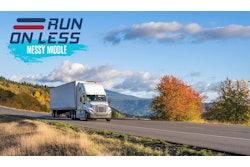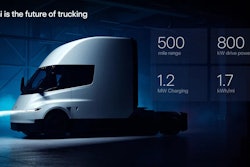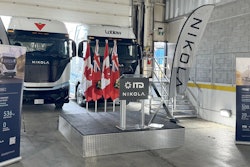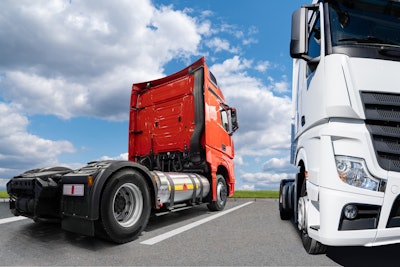
What you need to know:
- Fleets are increasingly adopting compressed natural gas (CNG) and renewable natural gas (RNG) trucks—especially Class 8 heavy-duty vehicles—as more practical and immediate alternatives to diesel.
- BEVs face issues like high costs, lack of nationwide Megawatt Charging Systems (MCS), and limited range.
- FCEVs are struggling due to high costs, safety concerns, and infrastructure gaps. Major players like Nikola and Hyzon Motors have gone bankrupt.
- CNG and RNG offer a realistic, deployable solution now, while BEVs and FCEVs remain long-term goals, with over 700 CNG refueling stations exist nationwide, making adoption easier for fleets.
Compressed and renewable natural gas-powered commercial vehicles—particularly heavy-duty Class 8 rigs—are becoming an attractive option for fleets nationwide, as sales and interest in their electrified counterparts decline.
Several states, led by California and its California Air Resources Board (CARB), continue to push for 100% zero-emission alternatives. However, they’re accelerating too quickly without the foundation—a safe, reliable, and proven nationwide charging infrastructure—in place.
Fortunately, fleets can take steps right now to help lower their carbon emissions. The solution is simpler than many might assume.
Eric Bippus, chief commercial officer of compressed natural gas (CNG) fueling systems manufacturer Hexagon Agility, recently explained to Clean Trucking this poses a question to fleets and operators: "Why should you wait for perfect when really good is right in front of you?"
Natural gas to the rescue?
According to the North American Council for Freight Efficiency (NACFE) Natural Gas 2024 Confidence Report, "Today, natural gas is seen by many as a widely available fuel that can power commercial trucks while significantly reducing the carbon intensive climate warming effects that would have been produced by diesels."
Also, the right combination of factors, such as natural gas fuel systems and the launch of Cummins' 15-liter X15N natural gas engine, are readily available and capable of getting the job done.
"The X15N, an industry first big bore natural gas powertrain with power and torque curves almost identical to those of diesels, will help long haul fleets see improved economic and environmental performance," explains Jose Samperio, vice president and general manager for North America on-highway operations at Cummins
Introduced in 2021 and launched last year, the engine is now available in Kenworth’s T680 and T880 models, as well as the Freightliner Cascadia and the Peterbilt 579, 567, and 520.
Walking through the halls of this years ACT Expo, Hexagon's Bippus observed that "Last year when we were here, if you looked at the major OEMs that have CNG trucks here now, none of them did [last year]. They all had EVs still. They had hydrogen trucks. Kenworth, Daimler, and Kenworth all have CNG-powered vehicles this year."
Although commercial battery-electric vehicle (BEV) adoption appears to be slowing down for now, what's become clear is that hydrogen fuel cell (FCEV) semis are not coming en masse to U.S. highways and freight corridors anytime soon.
[Related: Dealers face flatlined commercial ZEV sales following CARB mandate withdrawals]
R.I.P. hydrogen?
The bankruptcy of Nikola Motors last February was a significant blow to the FCEV commercial vehicle market. Another FCEV startup, Hyzon Motors, collapsed in late 2024.
[Related: Nikola Motors, once a Wall Street darling, files for bankruptcy]
Asian brands like Honda, Hyundai, and Toyota continue to invest in Class 8 FCEV R&D but, to date, their respective rigs remain unavailable for sale to private fleets in North America.
The hydrogen-powered semi market continues to dwindle due to high operating costs, lack of infrastructure, and some safety concerns.
[Related: Nikola's collapse brings headaches, financial problems for fleets]
What about BEVs?
The battery-electric commercial EV market has definitely slowed down in recent months due to several factors, such as Trump administration policies and a trucking industry still learning how to incorporate these new vehicles into their fleets while phasing out aging diesels, and not going bankrupt in the process.
Manufacturers are still in the process of mapping out their next BEV steps. Last week, the California Air Resources Board (CARB), along with 17 businesses, environmental groups, and public health organizations, sent a letter to North America's truck and engine manufacturers, urging them to uphold their commitment to the Clean Truck Partnership (CTP), established in 2023.
Perhaps most importantly, long-haul BEVs cannot operate without the use of Megawatt Charging Systems (MCS), which are not available nationwide. Also, the Class 8 BEV semis themselves typically cost at least twice as much as a brand-new diesel rig without any tax incentives.
The Tesla Semi, supposedly hitting the market in 2026, has completed several successful long-haul trips run by PepsiCo and DHL thanks to Megawatt charging, though this was done only in California where MCS units are more widely available.
Enter CNG and RNG
Compressed natural gas (CNG) and renewable natural gas (RNG) are both forms of natural gas but differ in their origins. CNG is compressed to a smaller volume for storage and transportation, while RNG is a biogas produced from organic waste like landfill gas or agricultural waste
As an alternative to traditional diesel, CNG and RNG offer not only lower fuel costs and reduced emissions, but also a growing number of refueling stations nationwide. According to the U.S. Department of Energy, that figure is currently at over 700 stations.
"We’re in the 'Messy Middle' because there’s no perfect solution. We’re kidding ourselves if we think BEVs are going to solve everything in the near term," explained Jeff Seger, NACFE's clean energy consultant. "The 'Messy Middle' will last for a long time. There's no perfect solution for long-haul. RNG gives the best solution in terms of economic factors and sustainability and getting the range. RNG can fit that node in the HD trucking market that’s not filled by BEVs or FCEVs.
Although neither are 100% emissions-free, CNG is typically more cost-efficient and accessible than RNG due to lower production costs. RNG is produced by capturing methane from organic waste and purified.
[Related: Clean Energy's new RNG production facility requires over 2,000 cows]
"The Transport Project said last year that throughout the U.S., 86% of natural gas used in transportation is RNG. That’s awesome," Seger adds. "In California it’s around 97%. That's great for the environment. But not all RNG is the same. RNG from animal waste achieves negative carbon intensity. RNG from trees is not negative but it’s still low. This is a really good thing."
Despite some environmental drawbacks, the shift from diesel to both CNG and RNG can be made immediately and affordably—two key advantages that Class 8 long-haul BEVs and FCEVs still lack.
"When we talk to our customers like UPS, we ask [whether] they're looking for a technology to experiment with, or a technology that you can deploy at mass," concludes Bippus.
[Related: Bipartisan effort introduces Renewable Natural Gas Incentive Act of 2025]


